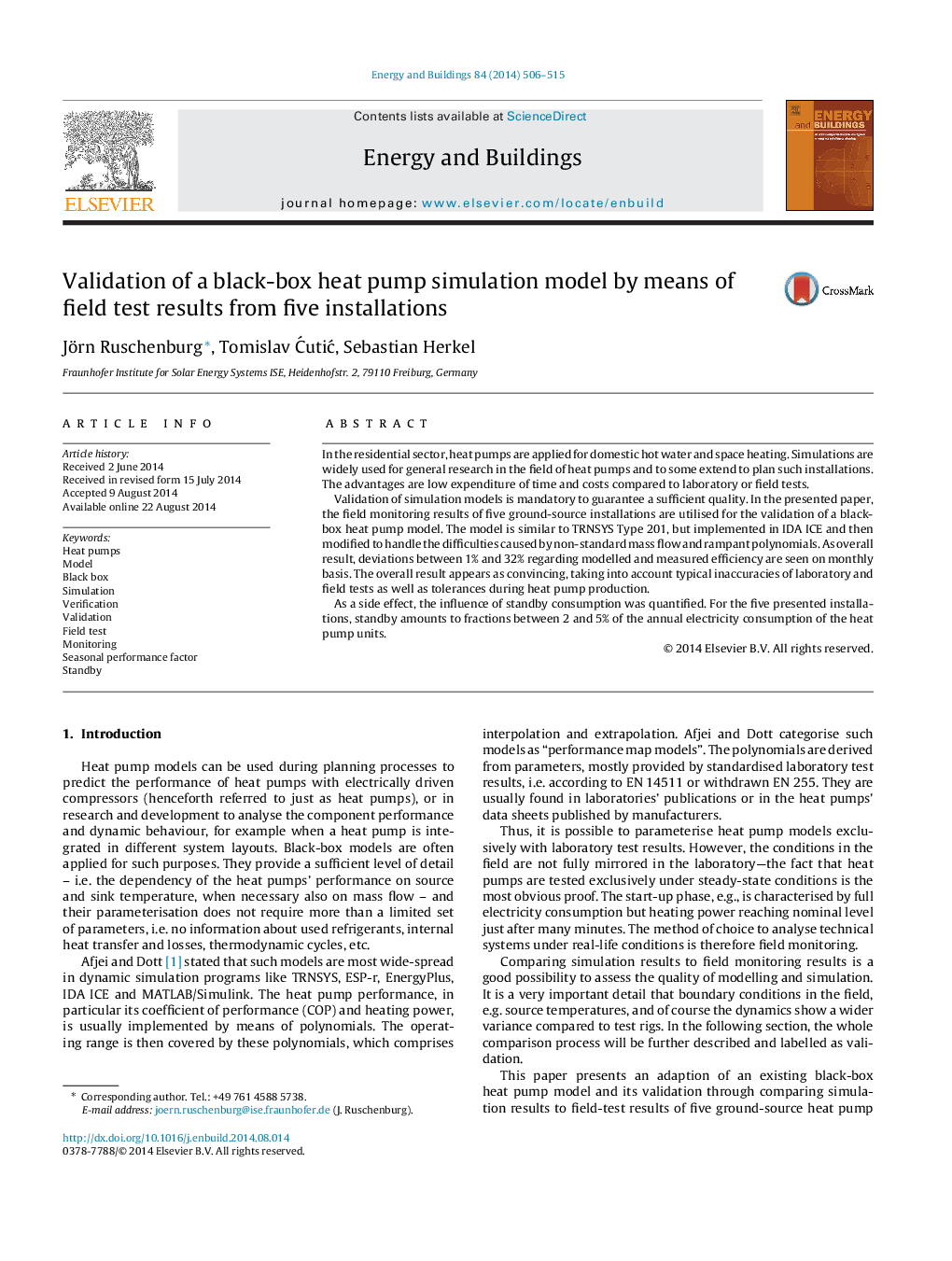| Article ID | Journal | Published Year | Pages | File Type |
|---|---|---|---|---|
| 262902 | Energy and Buildings | 2014 | 10 Pages |
•A black-box heat pump model like TRNSYS Type 201 is modified to gain stability and accuracy.•Improvements are shown, though no additional parameters are required.•We present a validation based on real-life data, i.e. five field test installations.•Evaluation is performed on annual, monthly and daily basis.•The influence of standby consumption is quantified as up to 5% of the consumption.
In the residential sector, heat pumps are applied for domestic hot water and space heating. Simulations are widely used for general research in the field of heat pumps and to some extend to plan such installations. The advantages are low expenditure of time and costs compared to laboratory or field tests.Validation of simulation models is mandatory to guarantee a sufficient quality. In the presented paper, the field monitoring results of five ground-source installations are utilised for the validation of a black-box heat pump model. The model is similar to TRNSYS Type 201, but implemented in IDA ICE and then modified to handle the difficulties caused by non-standard mass flow and rampant polynomials. As overall result, deviations between 1% and 32% regarding modelled and measured efficiency are seen on monthly basis. The overall result appears as convincing, taking into account typical inaccuracies of laboratory and field tests as well as tolerances during heat pump production.As a side effect, the influence of standby consumption was quantified. For the five presented installations, standby amounts to fractions between 2 and 5% of the annual electricity consumption of the heat pump units.
